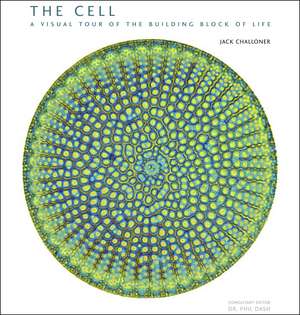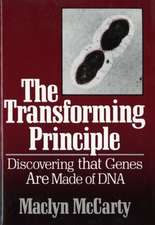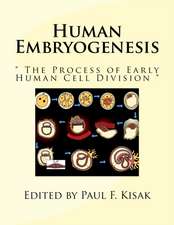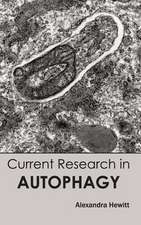The Cell: A Visual Tour of the Building Block of Life
Autor Jack Challoneren Limba Engleză Hardback – 16 oct 2015
The cell is the basic building block of life. In its 3.5 billion years on the planet, it has proven to be a powerhouse, spreading life first throughout the seas, then across land, developing the rich and complex diversity of life that populates the planet today.
With The Cell: A Visual Tour of the Building Block of Life, Jack Challoner treats readers to a visually stunning tour of these remarkable molecular machines. Most of the living things we’re familiar with—the plants in our gardens, the animals we eat—are composed of billions or trillions of cells. Most multicellular organisms consist of many different types of cells, each highly specialized to play a particular role—from building bones or producing the pigment in flower petals to fighting disease or sensing environmental cues. But the great majority of living things on our planet exist as single cell. These cellular singletons are every bit as successful and diverse as multicellular organisms, and our very existence relies on them.
The book is an authoritative yet accessible account of what goes on inside every living cell—from building proteins and producing energy to making identical copies of themselves—and the importance of these chemical reactions both on the familiar everyday scale and on the global scale. Along the way, Challoner sheds light on many of the most intriguing questions guiding current scientific research: What special properties make stem cells so promising in the treatment of injury and disease? How and when did single-celled organisms first come together to form multicellular ones? And how might scientists soon be prepared to build on the basic principles of cell biology to build similar living cells from scratch.
With The Cell: A Visual Tour of the Building Block of Life, Jack Challoner treats readers to a visually stunning tour of these remarkable molecular machines. Most of the living things we’re familiar with—the plants in our gardens, the animals we eat—are composed of billions or trillions of cells. Most multicellular organisms consist of many different types of cells, each highly specialized to play a particular role—from building bones or producing the pigment in flower petals to fighting disease or sensing environmental cues. But the great majority of living things on our planet exist as single cell. These cellular singletons are every bit as successful and diverse as multicellular organisms, and our very existence relies on them.
The book is an authoritative yet accessible account of what goes on inside every living cell—from building proteins and producing energy to making identical copies of themselves—and the importance of these chemical reactions both on the familiar everyday scale and on the global scale. Along the way, Challoner sheds light on many of the most intriguing questions guiding current scientific research: What special properties make stem cells so promising in the treatment of injury and disease? How and when did single-celled organisms first come together to form multicellular ones? And how might scientists soon be prepared to build on the basic principles of cell biology to build similar living cells from scratch.
Preț: 329.29 lei
Nou
Puncte Express: 494
Preț estimativ în valută:
63.03€ • 65.55$ • 52.82£
63.03€ • 65.55$ • 52.82£
Carte disponibilă
Livrare economică 20 februarie-06 martie
Preluare comenzi: 021 569.72.76
Specificații
ISBN-13: 9780226224183
ISBN-10: 022622418X
Pagini: 192
Ilustrații: 250 color plates
Dimensiuni: 210 x 241 x 20 mm
Greutate: 0.91 kg
Ediția:1
Editura: University of Chicago Press
Colecția University of Chicago Press
ISBN-10: 022622418X
Pagini: 192
Ilustrații: 250 color plates
Dimensiuni: 210 x 241 x 20 mm
Greutate: 0.91 kg
Ediția:1
Editura: University of Chicago Press
Colecția University of Chicago Press
Notă biografică
Jack Challoner is the author of more than thirty books on science and technology. He also works as an independent science consultant for print, radio and TV.
Cuprins
INTRODUCTION
Why the cell is Earth’s greatest success story, and the basis of all life.
CHAPTER 1
A Brief History of the Cell
In the 350 years since cells were discovered remarkable progress has been made in our understanding of them.
CHAPTER 2
Inside Living Cells
All types of cell share certain characteristics, including the molecular machinery that makes them work.
CHAPTER 3
Cells Beget Cells
The process of cell division accounts for growth and reproduction, as well as the evolution of new species.
CHAPTER 4
Cellular Singletons
The overwhelming majority of cells on Earth are individual living things— single-celled organisms.
CHAPTER 5
Coming Together— Multicellular Life
Cells cooperate within complex organisms and perform essential specialized tasks.
CHAPTER 6
Life, Death, and Immortality
Cells have evolved extraordinary ways to attack other cells and to protect themselves.
CHAPTER 7
Taking in the Cytes
The human body manufactures around 200 different cell types, displaying astonishing diversity and specialization.
GLOSSARY
INDEX
ACKNOWLEDGMENTS
Why the cell is Earth’s greatest success story, and the basis of all life.
CHAPTER 1
A Brief History of the Cell
In the 350 years since cells were discovered remarkable progress has been made in our understanding of them.
CHAPTER 2
Inside Living Cells
All types of cell share certain characteristics, including the molecular machinery that makes them work.
CHAPTER 3
Cells Beget Cells
The process of cell division accounts for growth and reproduction, as well as the evolution of new species.
CHAPTER 4
Cellular Singletons
The overwhelming majority of cells on Earth are individual living things— single-celled organisms.
CHAPTER 5
Coming Together— Multicellular Life
Cells cooperate within complex organisms and perform essential specialized tasks.
CHAPTER 6
Life, Death, and Immortality
Cells have evolved extraordinary ways to attack other cells and to protect themselves.
CHAPTER 7
Taking in the Cytes
The human body manufactures around 200 different cell types, displaying astonishing diversity and specialization.
GLOSSARY
INDEX
ACKNOWLEDGMENTS
Recenzii
“High school biology didn’t do much to make cells seem like fascinating, psychedelic visual art. The plant and animal cell diagrams splashed across textbook pages are a world away from what the billions of cells dividing, dying, or busily making proteins actually look like. The Cell more than makes up for that shortfall. . . . Amazing micrographs show the tiny building blocks of life in rich, strange detail. . . . If the images didn’t come with scientific explanation, it would be easy to confuse them with radical abstract art.”
“The Cell offers scores of beautifully intimate views of the complex organic universes of cells. Their sheer physical diversity is striking. Adipose tissue bound in collagen gives the impression of seaweed caught in an old net. Bundles of collagen fibrils mimic bamboo forests. Cells undergoing mitosis looks like jellyfish breaking apart. . . . The pictures would wow a child, but the book covers an astonishing amount of ground and would be an intriguing addition to any introductory biology class.”
“In his beautiful visual exploration of the cell, Challoner uses an exuberance of imaging techniques as well as infographics and data figures to illustrate this fundamental unit of life. Handsome and elegantly designed, this tour through the cell’s history and diversity in form and function is a delight to peruse. Each page is its own lovely rabbit hole, parsed to allow for quick snippets of “cyte-seeing” or hours-long, leisurely pleasure reading. This stunning collection would make a winning addition to the library of any lover of life and science.”
“Small really is beautiful: Psychedelic images show the inner workings of cells in stunning detail. . . . The book, although enjoyable to look at, aims to show readers just how amazing and beautiful science can be.”
“[Challoner’s] book about cells featuring micrographed images of the biological blueprints for each and every living thing in the universe could be considered more than an informational and visual tome—it could easily be a photographic work of art.”

















